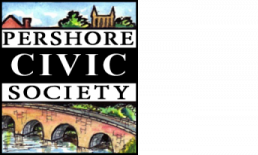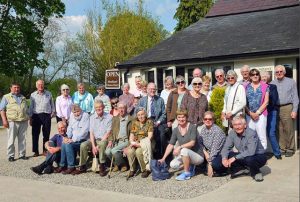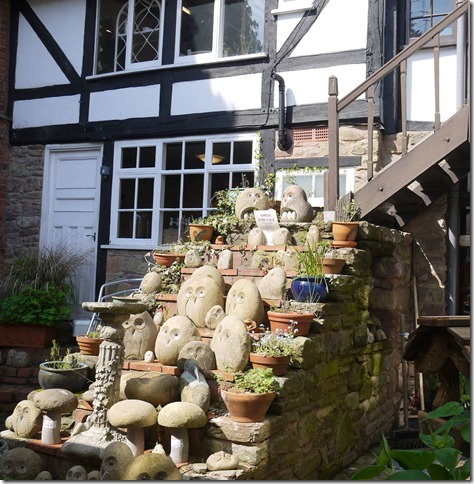12th May 2016
Our first stop on the Herefordshire Black and White Village Trail was at the lovely medieval town of Leominster. A popular destination there was the Old Merchant’s House in the corner of Corn Square, now a café and Antiques centre. This was the first of the many timber framed buildings on our route. The framework of building was built from green (unseasoned) oak and in it we saw panels infilled with lath, woven strips of wood and plaster. They made good coffee there too!
Leominster’s magnificent 13th century church was originally part of a medieval Benedictine priory. Although the priory is no longer, as a victim of Henry V111’s dissolution of the monasteries, the monastic church still survives.
In the church we saw the last ducking stool used in England. This was a form of punishment used for wives whose husbands felt they were too opinionated. Another use of the ducking stool was to test for witches. If the poor suspect died she was thought to be innocent, but if she survived the ducking, then obviously, the devil had saved her. She was then executed.
Pembridge had some wonderful timber framed buildings along its main street. Our knowledgeable local guide, Brian Draper, told us that the practice of decorating timber-framed houses by painting the beams black and the panels white, was a relatively recent one. This was to emphasise the pattern of the timber frame, and became common in Victorian times. Many houses prior to the eighteenth century were often left unpainted to weather naturally. Panels had lime wash applied, sometimes tinted with natural ingredients. Brian said that it was not uncommon for animal blood had been used for this purpose. It was a relief to see that the red panelled house we saw was nothing like the colour of blood!
There was a lunch stop at Kington, a Welsh boarder market town. It was near here that Sir Arthur Conan Doyle had his inspiration for ‘The Hound of the Baskervilles.’ Myth has it that a huge evil black dog caused havoc throughout the area. Even after its death locals were haunted by the dog’s spirit. Eventually the spirit was captured, put in a bottle, and thrown into a lake. If you find a bottle at the bottom of a lake do not open it or……
We drove through a number of delightful villages and had a stroll around Weobley, where Charles I stayed on the way back from the battle of Naseby in 1645. The spire of the fine church is a landmark for miles around.
Our last stop was at the Monkland Cheese Dairy/Café where there was tea, cake and the opportunity to sample the various cheeses. The perfect end to a perfect day!



